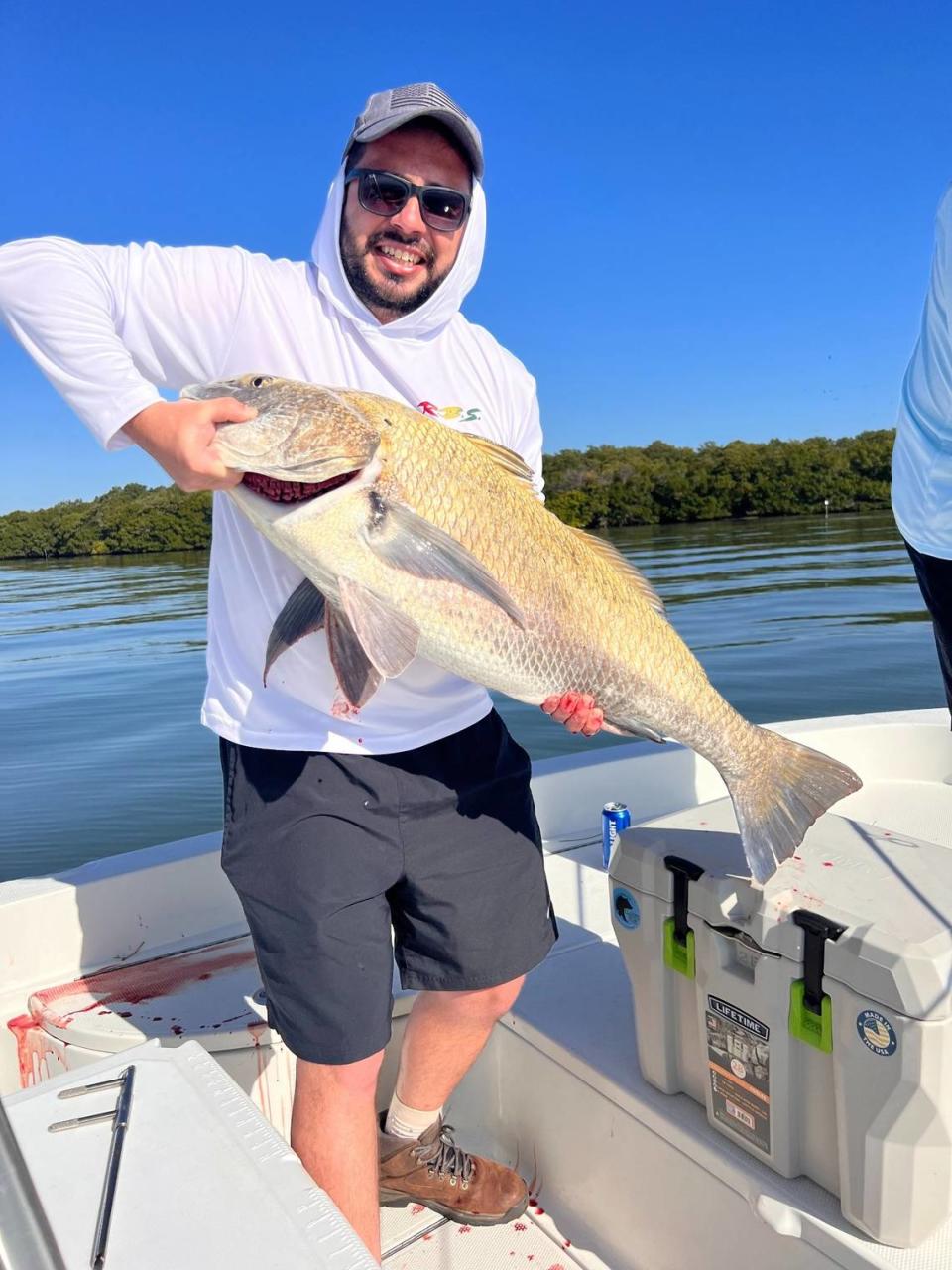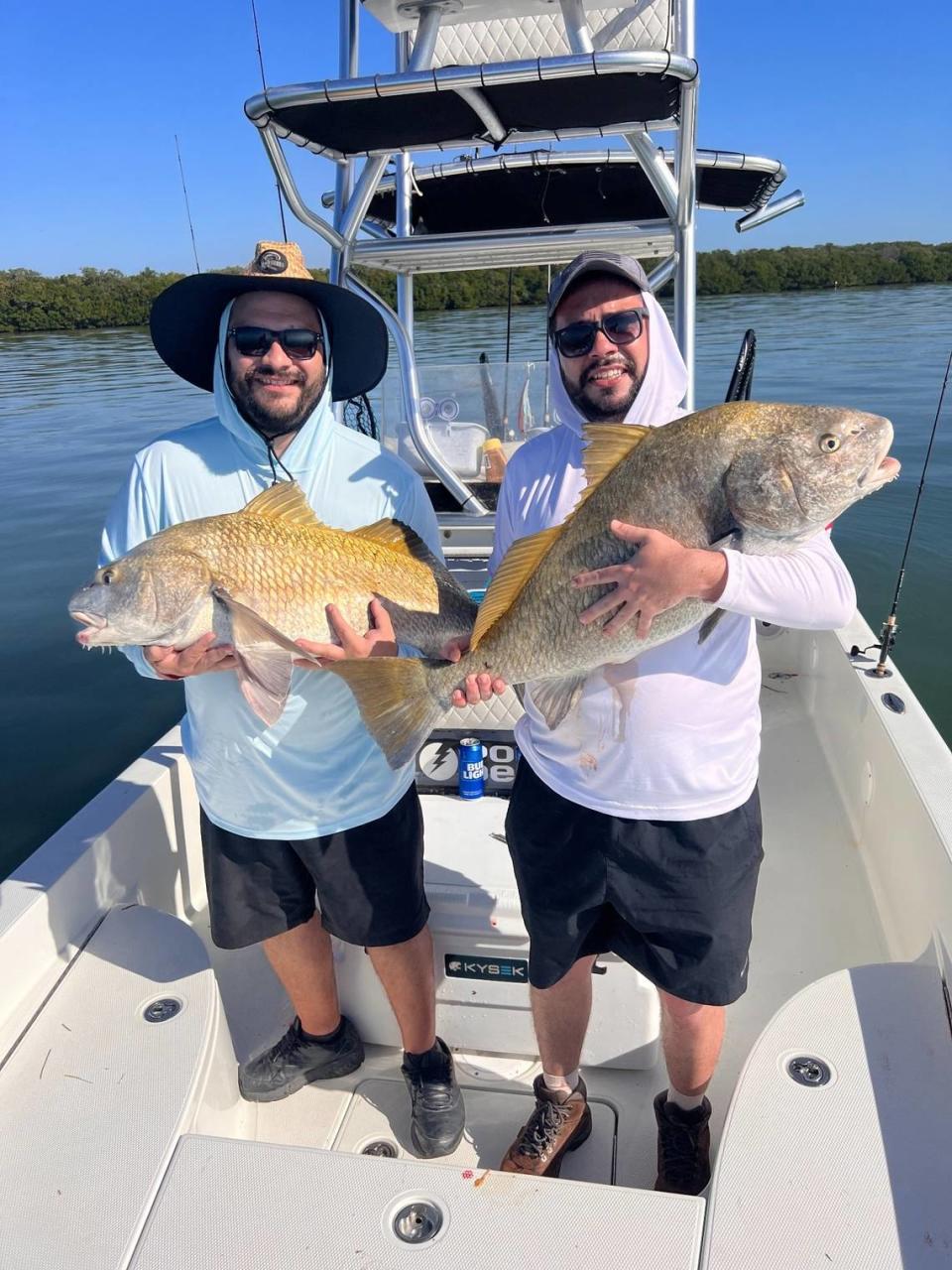These fish move in ‘gigantic schools.’ How to find black drum in Tampa Bay waters
As a fishing guide, sometimes catching the same type of fish over and over can get a bit tedious.
So when something new to target becomes available, it can re-energize not only a day but a season.
“I’m always looking for them this time of year. They can be in gigantic schools, 100 to 600 fish that are 15- to 40-pounds,” said St. Petersburg-based captain Brett Norris. “It’s more exciting than catching your typical 1-to-3-pound trout this time of year. This week we were getting some 30-pounds in 2 feet of water and that is pretty awesome.”
The fish Norris is targeting are not common in all areas, and their schooling lasts for a limited time. They are big black drum that come down the shorelines of Tampa Bay and make their way to the western edge of the bay for spawning.
In the summertime and fall, anglers fishing northern Tampa Bay bridges like the Gandy, Howard Frankland and Courtney Campbell can catch them while fishing along their oystery structures. But now they’re in cleaner water around the mouth of Tampa Bay, where Norris always keeps an eye peeled.
“The weather was so nice during the week I could see movement on the surface. It almost looked like cownose rays but when we got close, I knew what it was,” Norris explained.
“They start circling and swimming around each other. The first school I found was probably about 400 fish. When I told the guys what I was seeing, they finally saw them and said ‘holy (expletive)’. Clients love it, especially the ones who don’t know what they are.”
What they are is a member of the drum family that pulls hard and school up for a short period of time in February and March to spawn. They have a high back and are stocky for more strength.
Small ones can taste good, but the larger they get the more worms are found in the meat. Fish over 25 inches lose most of their appealing table fare. They can grow to over 90 pounds.
“In the morning they seem to do their spawning thing on the edge of flats out to 10 feet of water. In the early afternoon, they seem to take a break and get up on the flats. I think this is when they’re feeding. It’s exciting to watch a 40-pound fish eat a bait in a foot-and-a-half of water,” said Norris.
“We’ve been using 1/4-ounce jigheads with Little Johns but they’ll eat Gulp! baits, shrimp or crabs as well. It seems like they like a little stink. They’re very cooperative for the most part and if you stay quiet, they will hang around. As long as no one runs around them, you can work together and tug on them for fun.”
Capt. Brett Norris of Rock Bottom Charters can be reached at 727-512-4415.



 Yahoo Sports
Yahoo Sports 